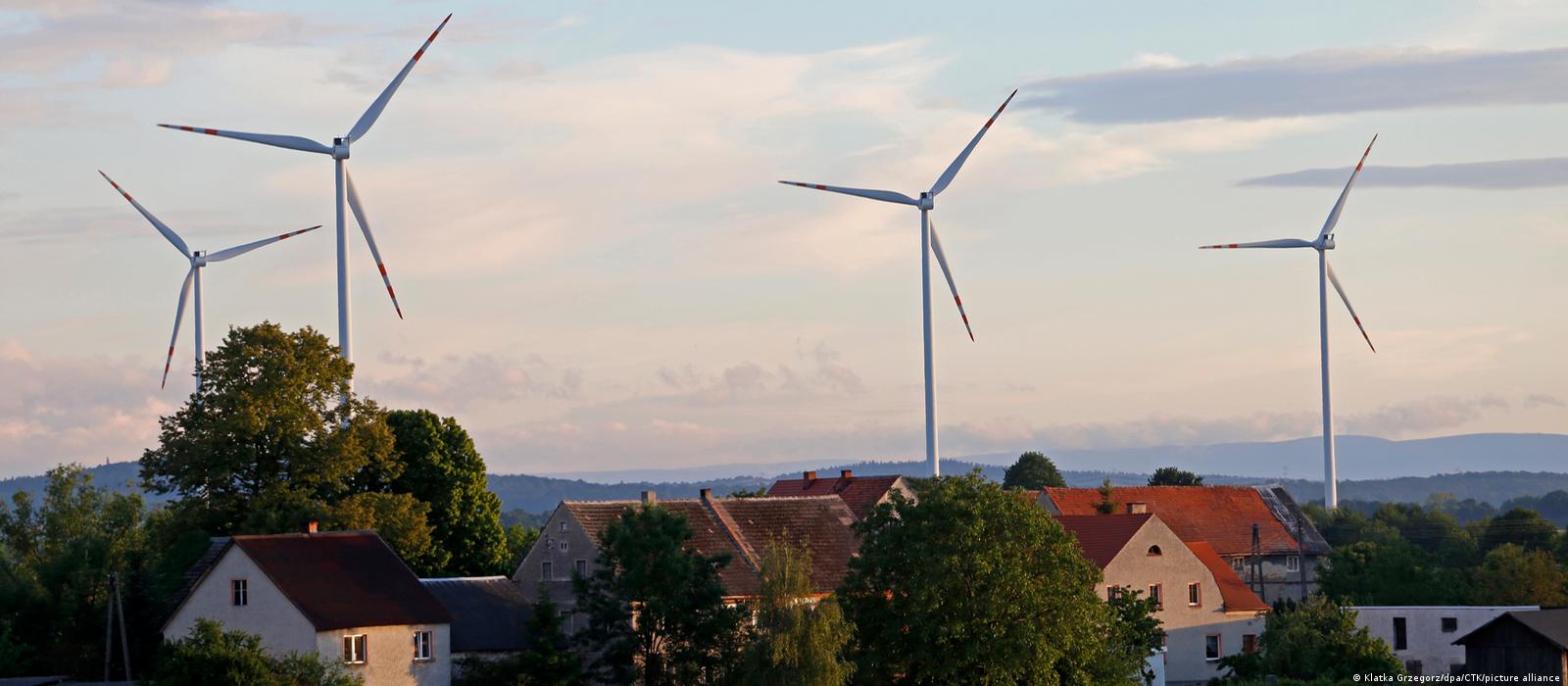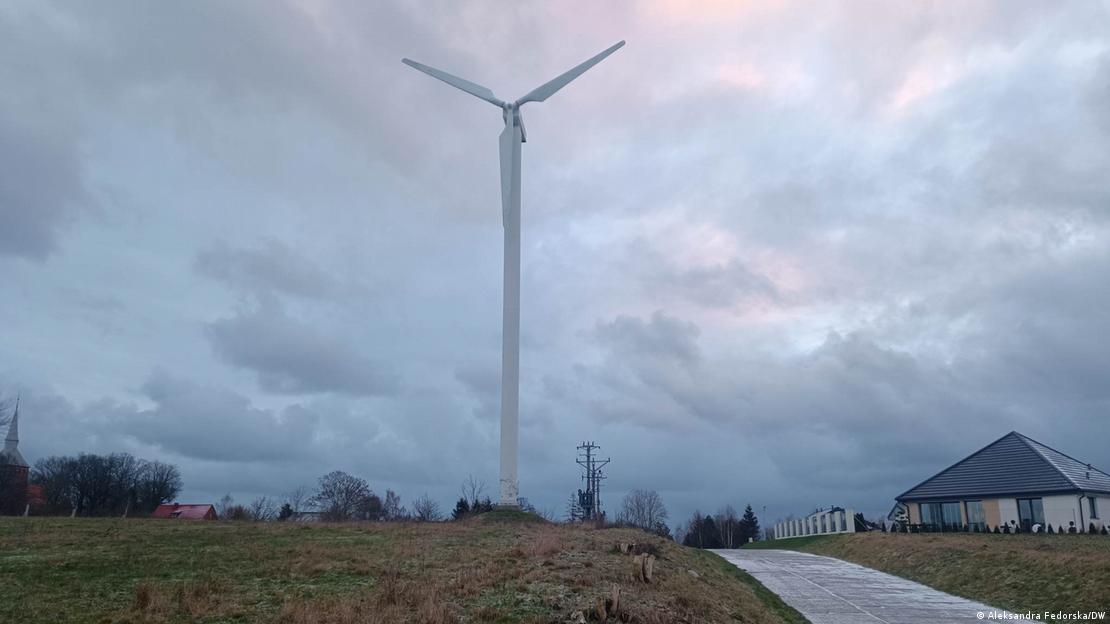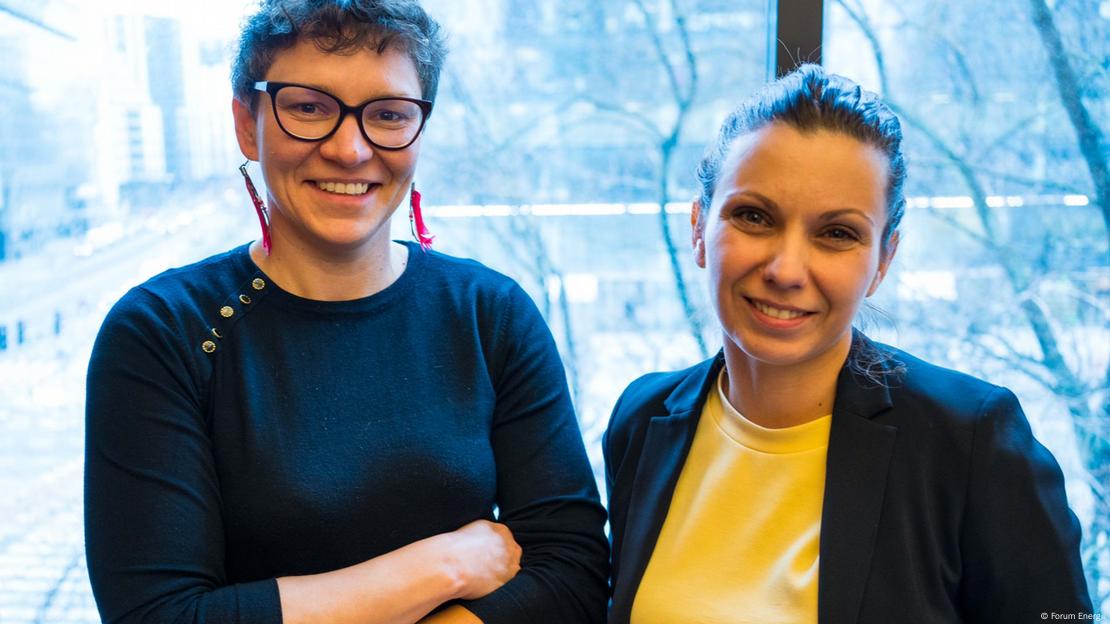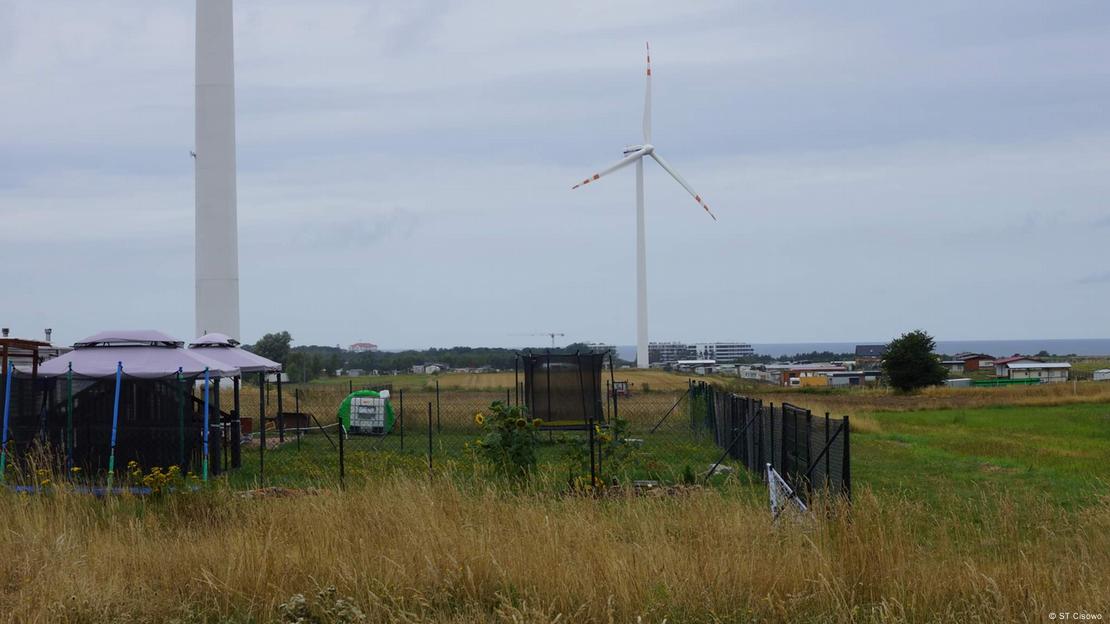
Poland: Wind power runs out of steam
02/12/2023
After a period of unregulated wind power development in Poland, the pendulum has swung in the opposite direction. Now, hardly any turbines are being built in the country.
https://p.dw.com/p/4NKgQ
The melt-in-the-mouth cheesecake on sale at Cafe Manufaktura Ciasta and the gentle sea breeze blowing around the village of Cisowo on the Baltic coast leaves visitors in no doubt that they are in a particularly lovely part of Poland — were it not for the huge wind turbine towering over the cafe just 3 meters (10 feet) from the road.
Within a radius of just a few hundred meters, a dozen other wind turbines have been erected in a seemingly random manner across the coastal landscape. They belong to two wind farms that were completed in 2001 and 2013.
It seems as if no consideration was given to maintaining any kind of distance from roads and houses. The operators of these wind farms — the companies Energia Eco and Enerco — said they obtained all the necessary construction permits from the relevant authorities.
Restrictions placed on turbine construction
To put a stop to this kind of unregulated wind turbine development, Poland's government, which is led by the conservative Law and Justice (PiS) party, passed a law in 2016 that introduced the so-called "10H rule" for all new wind turbine projects.

This rule stipulates that the distance between a wind turbine and the nearest house or nature reserve must be at least 10 times the turbine's height. If, for example, a wind turbine is 200 meters (656 feet) high, it must be at least 2 kilometers (1.2 miles) from the nearest house or nature reserve.
Law limits land available for turbines
People who don't like the look of wind turbines or consider them unhealthy or even damaging to the environment — whether in Poland or elsewhere around the world — have welcomed such restrictions.
But for the operators of wind turbines and supporters of renewable energy, the 10H rule pretty much means the end of onshore wind power development. Janusz Gajowiecki, president of the Polish Wind Energy Association, said that because of the law, only 0.28% of Poland's land area is now available for the construction of wind turbines.
"Current legislation rules out virtually all land for the construction of new wind turbines," said Aleksandra Dziadkiewicz of the interdisciplinary Polish think tank Forum Energii. She goes on to say that any new turbines currently under construction are being built on the basis of permits that were issued before the 10H law came into force, in other words before 2016.
"Yet Poland needs lots of new wind turbines for the energy transition," she said, "and as quickly as possible."
Compromise sought to allow for development
In late January, an amendment to the law was put to parliament. The hope was that a compromise could be reached that would help wind turbine operators. The amendment proposed cutting the legally required distance between turbines and houses or nature reserves to 500 meters.

According to the Polish Wind Energy Association, this would allow turbines to be erected on around 7% of the country's land area. But no agreement was reached in parliament. There are now plans to discuss an amendment that would fix the required distance at 700 meters.
Damian Babka of the renewable energy producer Qair Group confirmed that the failure to adopt the proposed 500-meter limit was a major setback for wind power producers. His company had pinned a lot of hope on the amendment. "While a distance of 700 meters would allow some projects to be implemented," said Babka, "it would keep the capacity to generate green energy at a very low level."
Residents of the picturesque village of Cisowo, which has a population of about 300, set up an association last fall that focuses on the impact of the unregulated development of wind power generation before 2016. Since 1998, 8.8% of residents have moved away from the village, and those who have stayed have little faith left in the authorities when it comes to enforcing laws.
Negative impact of liberal, flexible rules
There is huge support for the 10H rule in Cisowo, and the people of the village warmly welcomed its strict enforcement by the Polish authorities. The village has seen the downside of the market liberalization and the move to a system of more flexible rules.

For instance, several unauthorized camp sites and huts have been set up directly under the turbines. While they have a beautiful view of the sea, there is no wastewater treatment or refuse collections. The people in the village have no idea who built what and when. All they know is that the people camping there have not been moved on.
The house of the Bienert family, one of the founding members of the local association, is located just 450 meters from one of the wind turbines. The Bienerts are of the opinion that the noise and the change in the light caused by the turbine's rotors are having a negative impact on their well-being and health.
Maciej Bienert, the father of the family, is firmly in favor of the development of renewable energy in Poland. The Bienerts themselves have several solar panels on the roofs of their residential and commercial buildings, and sell a large amount of solar power.
"Clear rules are needed for it to work in the long run," said Bienert. "And you can't make those rules without the people who are directly affected by them."
This article was originally published in German.

















